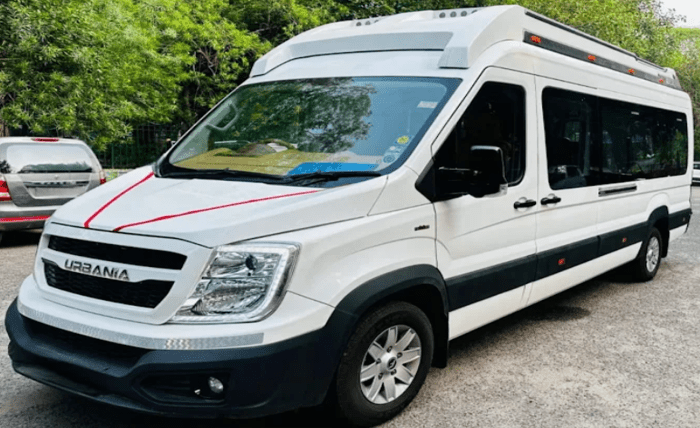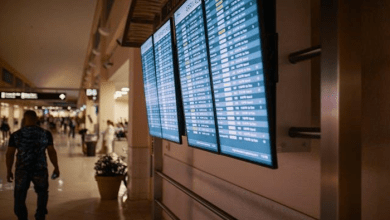
You’ve got a group trip coming up. Twelve people will be traveling. Maybe more. You start ringing around for transport quotes, and suddenly you’re staring at numbers that don’t make sense. One company quotes one figure, another quotes something completely different. You’re left wondering if you’re getting ripped off or if you’ve found a bargain. The confusion is real, and it affects your entire trip budget.
Group travel requires planning that catches most people off guard. You need reliable transport that works, costs don’t bankrupt you, and somehow accommodates everyone’s needs. That’s the tricky bit nobody mentions when you’re booking.
What Makes Tempo Traveller Rental Costs Jump Around So Much
The 12-seater Tempo Traveller sits in that weird space between regular minivans and actual coaches. It’s versatile, which sounds great until you’re trying to figure out pricing. Distance travelled is your biggest cost driver. A 50-kilometre trip versus a 500-kilometre journey? Completely different ball game.
Duration matters just as much. Day trips don’t cost the same as multi-day bookings. Your rental fee covers fuel burn, driver wages, vehicle maintenance, and company overhead. Each extra day adds up quickly. Some operators offer slightly better rates if you book longer periods, but you need to calculate this yourself rather than trusting their promises.
Season affects pricing more than most travellers realise. Holiday periods see rental demand spike. Everyone wants transport at around the same time. Operators know this and adjust rates accordingly. If your dates have any flexibility whatsoever, shifting your trip by a week can save significant money.
Hidden Variables That Actually Change Your Quote
Vehicle condition and age influence costs surprisingly often. Older vehicles consume more fuel. Newer models with better engine management systems run leaner. Maintenance costs get factored into daily rates, whether you notice or not. Air conditioning efficiency, suspension quality, and upholstery condition all matter to operators calculating their daily rates.
Road conditions affect everything, too. Mountainous terrain requires more fuel than flat highways. Stop-and-go city driving burns through petrol faster than continuous motorway cruising. Toll roads, state entry taxes, and parking fees add layers that most people forget when budgeting. These creep up on you gradually throughout your journey.
Insurance coverage isn’t standard across all rentals. Some companies bundle comprehensive protection. Others offer basic third-party only. Declining insurance to save money feels sensible until something goes wrong. Accidents happen. Medical bills and vehicle repairs escalate costs beyond what you saved by skipping insurance.
Driver arrangements change your total spend. Professional drivers are included with some rentals. Others charge extra or expect you to arrange your own. Quality drivers know route optimisation, basic vehicle maintenance, and safe practices. Cutting corners here creates risks that cost far more later on.
Why Booking Timing Reshapes Your Budget Entirely
Last-minute bookings give you almost no negotiating power. Companies know you’re desperate. They charge accordingly. Booking weeks in advance shifts the dynamics completely. Operators appreciate predictability and often provide better rates for early commitments. This isn’t speculation. It’s how rental companies actually operate.
Weekday travel costs less than weekend trips. Businesses book their transport mid-week, leaving fewer vehicles available for regular travellers. Weekends flood the market with leisure bookings, pushing rates upward. Tuesday through Thursday tends to be your sweet spot for better availability and pricing.
Off-season travel offers massive advantages if your schedule allows. Monsoon periods, extreme heat months, and unpredictable weather seasons see lower demand. Rental companies prefer booking something at reduced rates over vehicles sitting idle. You gain leverage during these quieter periods. Negotiating becomes possible rather than impossible.
Breaking Down What Your Budget Actually Needs To Cover
Start calculating from scratch rather than guessing. Measure your actual journey distance. Don’t round down. Check your travel dates carefully. Account for pick-up day, drop-off day, and everything between. These details seem obvious until you realise you’ve miscalculated by a full day and your budget explodes.
Fuel costs deserve their own line item. Calculate expected consumption based on distance and terrain. Build a ten per cent buffer because real-world conditions rarely match theoretical calculations. Tolls accumulate faster than you’d expect. Highway tolls, city congestion charges, and state entry fees add up throughout your journey.
Insurance should never be an afterthought. Third-party coverage protects against liability but leaves your vehicle exposed. Comprehensive policies cost more upfront but prevent financial catastrophe if things go sideways. Making this decision in a rush usually means poor choices.
Driver arrangements need clarity upfront. Professional drivers command daily rates. They handle navigation, vehicle maintenance checks, and safe driving. Self-driving means no driver wages but demands that someone in your group handles lengthy driving stints. Each option carries different costs and risks.
Smart Research Methods That Actually Reveal Real Prices
Ring multiple rental companies rather than stopping at the first option. Different operators price identically-aged vehicles differently. Fleet maintenance standards vary. Service quality differs. Comparing three quotes gives a genuine perspective on market rates. You’ll spot outliers quickly.
Check what’s included versus what costs extra. Some companies quote all-in prices. Others quote base rates, then nickel-and-dime you with add-ons. Reading the fine print takes effort. Spotting these differences prevents unpleasant surprises when you collect the vehicle.
Ask specific questions about fuel policy. Some rentals include a full tank and expect a return with a full tank. Others charge per litre consumed. Understanding this upfront matters enormously for your budget accuracy. Getting confused later means overpaying.
Look at cancellation policies carefully. Life happens. Trips get postponed. Knowing your financial exposure if plans change prevents panicking later. Flexible cancellation policies cost more but provide peace of mind.
Making Your Numbers Actually Work In Practice
Splitting costs fairly among twelve people requires upfront honesty about money. Ambiguity about payment causes tension later. Clear agreements about who pays what prevent financial conflict from derailing your trip. Collect money early rather than chasing people down afterwards.
Budget for unexpected expenses. Vehicles break down occasionally. Toll roads you didn’t anticipate appear. Someone forgets their contribution. Building a ten to fifteen per cent contingency buffer prevents small problems from becoming group disasters.
Track all expenses as they happen. Keeping records prevents disputes about who owes what. Digital payment apps make splitting costs painless. Everyone sees charges transparently. No guessing or arguments afterwards.
Final Thoughts On Getting This Right
Renting a 12-seater Tempo Traveller doesn’t require mysterious knowledge. Understanding what drives costs helps you budget properly. Distance, duration, season, and vehicle condition matter. Hidden expenses like insurance, tolls, and fuel add complexity. Research thoroughly, book strategically, and plan for contingencies.
The vehicle itself requires basic checks. Tyres should have decent tread. Lights and wipers must function properly. Air conditioning systems need testing before you commit. These inspections take minutes but prevent problems mid-journey.
Group travel succeeds when financial planning happens upfront rather than causing stress later. Smart budgeting transforms a potentially chaotic situation into manageable planning. Your group gets reliable transport without unnecessary financial stress hanging over the trip.




